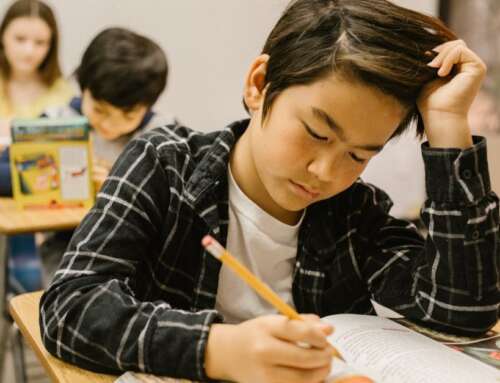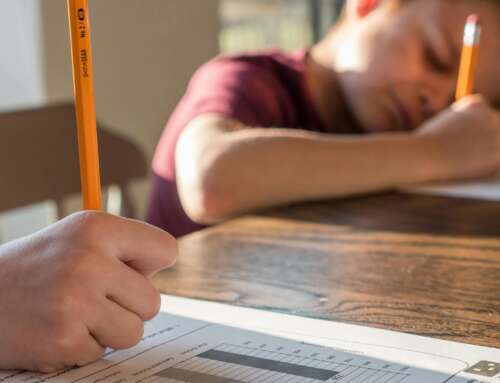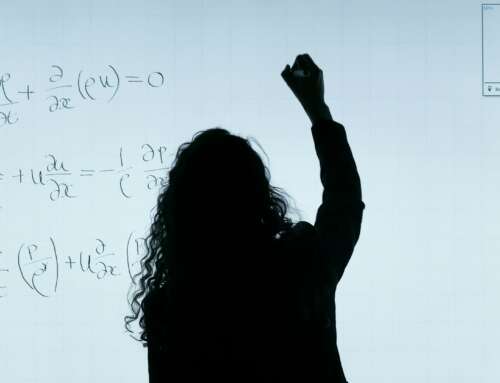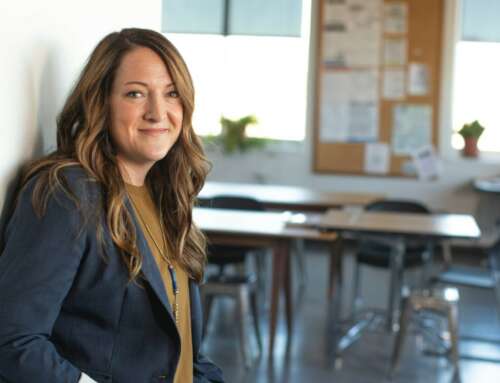When anxiety effects kids, some become ‘chatty & scatty’ while others become ‘broody & moody.’ Generally the ‘chatty & scatty’ kids become distractible & lose concentration, the ‘broody & moody’ kids become sullen, avoidant & lose motivation. They can become hypervigilant & see threats where they are none.
I have written extensively about the treatment of anxiety in my books. This paper is specifically about learning.
The capacity of anxious young people to panic in tests & exams or freeze when called upon can make some avoidant of school. Others incorrectly assume that they are not clever & cannot be successful. Helping these young people to identify & build upon their learning strengths increases their self-belief & feelings that they can succeed.
There is no failure, only feedback
Anxious kids can convert setbacks into catastrophic assaults on their self-esteem. Helping them to learn how they are smart
(rather than whether they are smart) is a major advantage. As many of these kids are ruminative worriers, setting up a positive resilient mindset assists them.
Spatial Reasoning
Thinking in pictures and symbols is a learning strength that is especially worthy of development in kids who suffer from anxiety.
Stress particularly inhibits our production of language and words. If you have ever been ‘shocked speechless’ you may know this. Being able to convert & convey information spatially & visually rather than verbally helps anxious kids to experience success.
Perceptual-Motor Skills
Performance anxiety & embarrassment can stifle the development of this learning strength. Help these kids to develop & practice skills away from the gaze & judgement of peers.
These are sensitive people who are attuned to their sensory inputs. Helping them to attend to pleasant as well as fearful feelings is an important part of helping them develop confidence & motivation.
Concentration and memory
It is hard to focus in school when you feel terrified or preoccupied by what others may think of you. Anxiety, left unchecked, plays havoc with learning strengths in concentration & memory.
As keen as some of these kids are to be accepted by friends, help them to view school as primarily about learning & friendships can occur elsewhere.
Helping ‘chatty & scatty’ kids pick out the most important aspects of a topic is a learning strength worth developing. ‘Moody & broody’ kids can be helped to develop the skills of note-making. Both groups can develop their memory to high levels.
Planning and sequencing
Some anxious kids fail tests before they even take them. They over-plan & anticipate every possible difficulty. Disasters loom large. Fears of failure hound them.
Usually, uncertainty & ambiguity amplify anxiety. Help them to make systematic, realistic plans where they can take the steps towards success. Goals can heighten anxiety for these kids, systems and rituals can calm them.
Help them not to get ahead of themselves. Anticipatory thinking often predicts humiliation and feeds a sense of dread. Catch them when they are mentally focusing on the future & gently direct them back to the present and to the plans they have made.
Developing a learning strength in planning & sequencing helps anxious kids to base their actions on logical steps that relate to desired outcomes rather than on their current feelings & preoccupations.
Thinking and logic
Helping anxious kids learn the scientific method advantages them greatly. Simply put, this is:
1. Gather together data
2. Form a best idea (a hypothesis)
3. Test out your idea
4. Decide if your hypothesis is still your best
idea
5. Make a conclusion
This circumvents their endless repetitive thinking or only basing their thinking on their feelings.
People smarts
Anxious kids often fear negative evaluations by others. This makes it hard for them to utilize feedback & make changes.
Developing learning strengths in people smarts contributes greatly to their success. As they often view the world as potentially hostile, working out who can be trusted and who is a threat is a process of reading others well. It is also important to learn that feelings of anxiety are signals but are not always accurate.
Language and word smarts
Anxiety can leave even the most articulate of us stumbling & mumbling. Developing learning strengths in communication of ideas through writing, music, video or dance will help build this area.
Performance anxiety, including speaking in public, inhibits the development of this learning strength. Ideally we begin overcoming this in childhood by providing opportunities to be involved in performances in practical non-speaking roles and gradually increasing their level of participation and verbal contributions.
Number smarts
This is the learning strength area with the largest barrier for anxious kids. Around 17% of people suffer high levels of math anxiety. For this reason I will outline more completely, a method of lessening anxiety & improving number smarts as a learning strength.
Let’s change the way you view mathematics. I could tell young people to use their other learning strengths to become number smart but often they won’t believe me that. Instead, let’s relate maths to cooking.
How Mathematics Can Be Like Cooking
Not everyone grasps the depths at which mathematics reveals the universe. Some of us are more pragmatic in our understanding. Recipe mathematics is helpful for those who learn in a more hands on way.
It is the same as making a cake. You need ingredients and a method to reach an outcome. In baking a cake your ingredients include eggs, flour, sugar and butter. Your method is mixing the ingredients, baking and icing. In recipe maths you use the ingredients and follow the steps to reach the answer.
For example if I am trying to find an average. My ingredients are the number of scores and the number of responses. The recipe method is to add up all the scores and then divide by the number of responses.
Imagine spreading all of the ingredients in front of you. Ask yourself, what have I got in front of me? What am I supposed to create with them? In what different ways could I combine these ingredients?
This method is about reducing anxiety and providing structure to learning. Of course this method can apply to cooking up answers to deeper questions about the universe too. Use your Thinking & Logic learning strength. Think Small- break maths problems into smaller bits and put them together later. Look at what you can do rather than what you can’t do- when we are terrified every looks like a wall of impossibility. Look at the parts you do understand and make sense of those first.
Use your Planning & Sequencing learning strength. Make a first attempt- even though you may feel you have no idea what you are doing, make a start on something. It is often the case when we try something we can see why that is the wrong approach and that suggests to us a better and different way to start.
Work backwards- when you don’t understand a maths problem see if you can find the answer (such as in the back of the book) and work backwards. See if you can work out why that is answer.
Use your Language & Word learning strengths and write it out. When you get stuck in understanding a maths question write out what you think the task is as a sentence. If it still doesn’t make sense, take the question to your teacher and ask them to correct it or explain it. Writing out the problem sometimes shows your teacher that there is something you don’t understand yet and helps them to see what they need to teach you.
Use your Spatial Reasoning learning strength. Draw it- drawing a maths problem like it is a flow chart can help you to put the problem into steps to be followed (a bit like the steps involved in baking a cake).
Try to be aware of the difference between being stuck and not wanting to do it- it can feel easier sometimes to give up rather than slowly building your skills in something that makes you feel stressed. If you have ever done a jigsaw puzzle you know that you start putting the bits that make sense together, leaving the harder bits for later. Mathematics can be like that.
Use your People Smarts learning strength. Working with someone else who want to improve at maths can make it more fun. Often you will know how to do things they don’t know how to do and they will know how to do things you don’t know.
YouTube- while your teachers will help, YouTube has lots of clips of students clearly and helpfully explaining how to solve specific maths problems.
Make this Into a Personal Challenge- you’ve done hard things before- learning to ride a bike, swimming, walking etc. Use this as a way to challenge yourself to improve (but give yourself the freedom to improve slowly).
Use your Perceptual- Motor learning strength. Get up and walk about. When you feel stressed or stuck it is good to shake off the anxiety. When you can go for a quick walk or run before settling back down to tackle a problem.
Of course, the strategies mentioned in this paper don’t only apply to young people. They may also help some adults. Good luck!
Download the PDF
More information:
Andrew’s website
www.mylearningstrengths.com has helped over 11,000 young people in the past year discover their learning strengths.
On Facebook:
andrewfullerpsychologist
Learning Strengths
Books for Parents
Unlocking Your Child’s Genius
Tricky Behaviours
Book for Teachers
Neurodevelopmental Differentiation- Optimising Brain Systems To Maximise Learning (Hawker-Brownlow).







Will use these insights with some students, and myself of course who has experienced anxiety since a small child.
Thank you Andrew